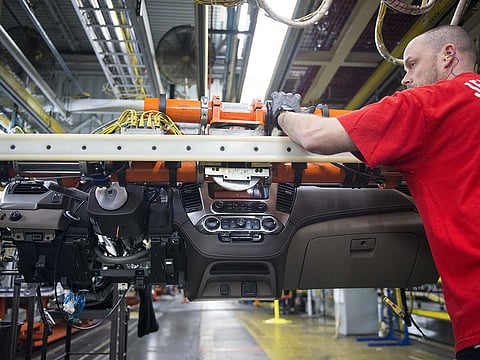Some US jobs are coming back, but economy will need years to heal
Employers are rehiring workers faster than economists anticipated, as of mid-June

Washington: Sales were stronger than expected when Macy’s reopened its first stores in early May, after a nearly seven-week coronavirus shutdown. But that initial surge soon fizzled, leaving the retailer’s brick-and-mortar business down more than one-third.
Some stores reopened in malls where restaurants and movie theaters remained closed, limiting foot traffic. Outlets in major cities suffered from the absence of foreign tourists. And recent coronavirus flare-ups across the South and West convinced executives they faced a grueling recovery that could take until 2022.
“The situation is really fluid. And it changes day by day,” Jeff Gennette, Macy’s chief executive, told investors this week on an earnings call.
The same could be said of the entire U.S. economy, which has defied the most pessimistic forecasts yet still faces an uncertain trek back to its former heights. With the unemployment rate at 11.1 percent, worse than at any point during the Great Recession, and output continuing to decline, the healing could go on for years.
Re-hiring picks up
Employers are rehiring workers faster than economists anticipated, at least as of mid-June when the latest Labor Department survey was taken. But more recent setbacks in the economic reopening, as the daily number of coronavirus cases topped 50,000 for the first time, have blackened the outlook.
“It’s going to be pretty slow going. The bottom line is this is all about public health, public health, public health,” said Narayana Kocherlakota, a former Federal Reserve Bank president. “This is absolutely a multiyear recovery.”
More than half of the country has now paused or reversed plans to reopen for business, according to Goldman Sachs. Almost four months after the first shutdowns, the health situation is getting worse, not better, in states such as Florida, Texas, Arizona and California. New national data on credit card spending, restaurant reservations and small-business hours show that the recovery from the recession that began in February may already be losing steam.
Sings of revival
On Thursday, the Congressional Budget Office released its new forecast, calling for the economy to expand at an annual rate of 12.4 percent in the second half of the year, down from the 15.8 percent it projected in May. That represents unusually rapid growth, but it will follow a three-month period that is widely expected to be the worst in modern history.
The Atlanta Fed’s real-time model estimates that the economy shrank in the quarter that ended June 30 at a rate of 35 percent.
Still, the situation is not as bad as many economists feared. In March, as the economy plunged into the deepest recession in decades, many warned that the unemployment rate would hit 20 percent by summer.
On Thursday, in contrast, the Labor Department reported that the economy created 4.8 million jobs in June, shattering the record set in May.
Risks are real
The economy remains badly wounded. Nearly 19.3 million Americans are receiving unemployment benefits, almost three times the peak during the worst of the 2008-09 financial crisis and up from just 1.7 million in early March.
The situation is still so dire that the Fed for the first time in its 107-year history has created a program to buy the corporate bonds of blue-chip companies such as Apple, Walmart and AT&T to facilitate lending.Instead, the outlook is a start-and-stop recovery with the economy held hostage by a failure to contain the pandemic, some economists said. Adjusted for inflation, the economy will be smaller than it was at the end of 2019 until the middle of 2022, according to the CBO.
Sign up for the Daily Briefing
Get the latest news and updates straight to your inbox







